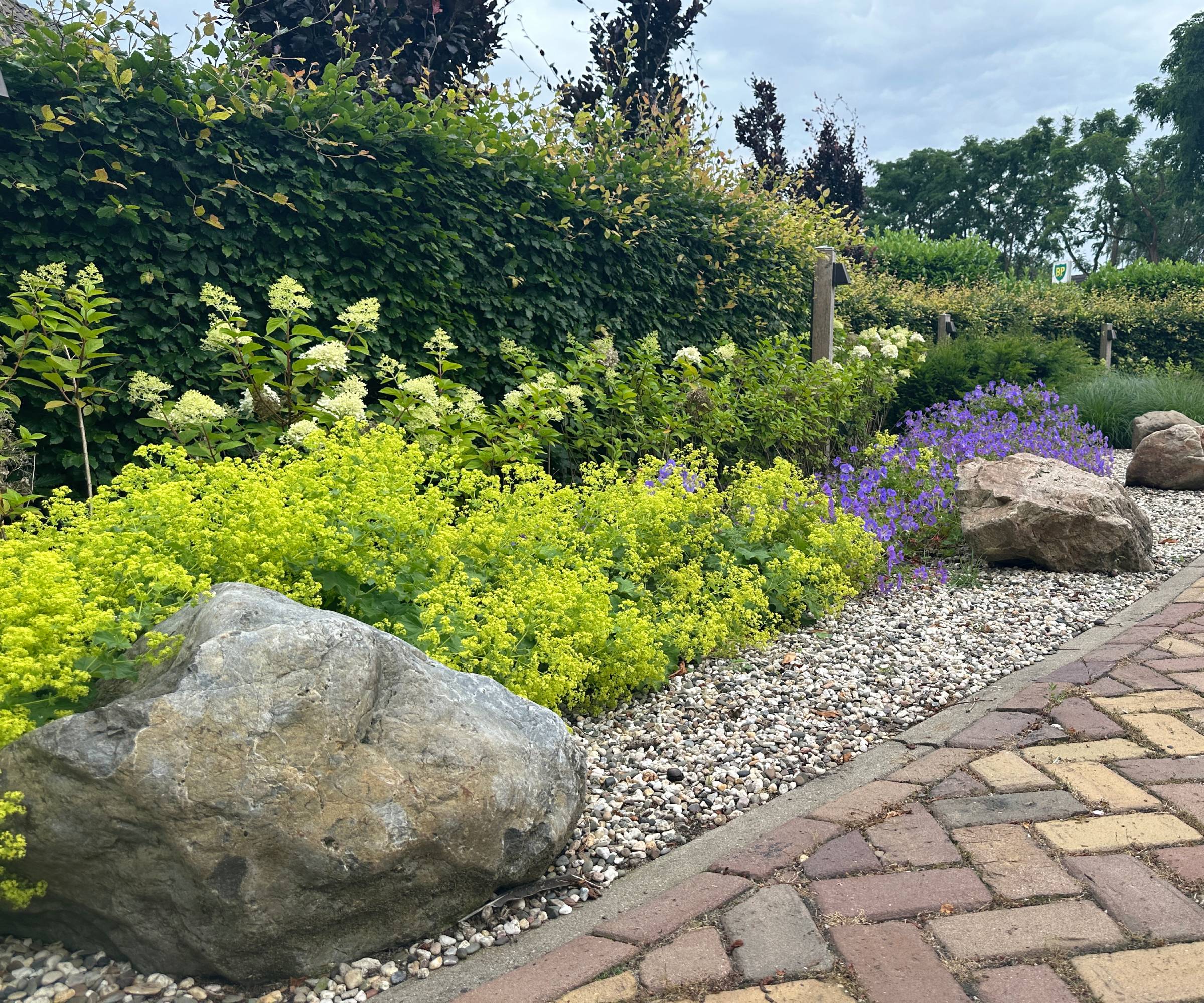How To Grow And Care For Lady’s Mantle In The Garden
Lady's mantle is an interesting plant to add in the garden, especially shady borders. This ground cover will provide visual interest and unique flair.


Quick Facts
Botanical name: Alchemilla mollis
Height: 1.5 feet ( .46 m.)
Spread: About 1.5 feet ( .46 m.)
Sun exposure: Partial
Soil requirements: Well-draining soil
Hardiness zones: USDA 3-8
When to plant: Spring
Lady’s mantle is an herbaceous, perennial plant also known as Alchemilla mollis. It is native to western Asia and parts of Europe where it thrives in mountainous regions. The lady’s mantle plant is an ornamental low light plant, perfect for areas with little sun. It boasts attractive leaves, interesting flowers, and ease of care.
Lady’s Mantle Care
The lady's mantle plant sports velvety, softly scalloped leaves covered in fine hairs. The individual foliage is up to 6 inches ( 15.24 cm.) across and has 9-11 lobes. These form a natural cup that holds morning dew. Early alchemists thought this dew was the purest form of water and could be used in making gold. Lady’s mantle is in the rose family, but you wouldn’t know it from its blooms. The flowers are small, star shaped, and held above the plant on slender stems. The Lady’s mantle flower is greenish yellow, held in clusters, and appears from May to June.

Light
In nature, Lady’s mantle grows as an understory plant. It prefers partial sun locations. It will also tolerate a full sun site in cool regions, but it will need more frequent watering, and searing noontime sun can scorch the pretty leaves. In hot zones, the plant will need some shade in the afternoon.
Water
The optimum growth will come from consistent watering, but Lady’s mantle is tolerant of short periods of drought. At initial installation, keep the plant moist but allow the soil to dry in the top 2 inches ( 5 cm.) before reirrigating.
Temperature & Humidity
Alchemilla is hardy to United States Department of Agriculture planting zones 3-8. It prefers cooler climes which mimic its native range. Lady’s mantle will die back a bit in winter. The plant is tolerant of any humidity.
Soil
The soil must be well draining, otherwise Lady’s mantle is not picky. However, the best health is achieved in alkaline soil.

Fertilizer
Feed Lady’s mantle plants in early spring, just as new growth begins to appear. Use a balanced liquid or time release formula. If you have good, rich soil, feed just once in the spring. Plants grown in poor soil will benefit from a couple of feedings early in the growing season.
Sign up for the Gardening Know How newsletter today and receive a free copy of our e-book "How to Grow Delicious Tomatoes".
Problems, Pests & Diseases
Like most plants, boggy soil will cause rot issues. Otherwise, there are no serious pest or disease issues. The plant may become invasive due to its self seeding nature. Cut off the flower heads before they become seed. This will prevent overseeding and may promote a late season bloom.
A nice benefit of planting Lady's mantle is that it is deer proof and slugs and snails won't eat it.
How to Plant Lady’s Mantle
For best results, plant Alchemilla mollis in early spring once soil is workable. Loosen soil to a depth of 6 inches ( 15 cm.) so the roots can easily penetrate it and establish quickly. Water the soil around the roots thoroughly. Growing lady's mantle in containers is a nice option no matter the size of your garden, but take care to protect the roots over winter by burying the pot or insulating the container.
Pruning

The leaves don’t need to be cut except where some have died. The flowers can be removed after they begin to die, possibly encouraging another bloom. Let the dying leaves remain around the plant for winter. This will insulate the plant a bit. Remove them in spring when new leaves begin to appear.
Propagation
Lady’s mantle is propagated by division or seed. Divide older plants in late winter to early spring. Sow seed indoors 6-8 weeks before your last frost is expected. Harden off the seedlings before planting them outdoors.
Repotting
Use a good potting soil when growing Lady’s mantle in containers. It must be freely draining and the container should have several drainage holes. Re-pot the plant when it outgrows its container. You may either give it a larger pot or divide the lady's mantle plant to fit its current container.
Varieties

There are over 300 species in the Alchemilla genus. Alchemilla mollis and Alchemilla vulgaris are the most commonly found. There are a few popular cultivars of A. mollis.
- Robusta
- Thriller
- Irish Silk
- Auslese
Frequently Asked Questions
What Is Lady's Mantle Used For?
The leaves of the plant were used to treat a variety of ailments from anemia to diabetes. It was also used topically for wounds and burns. The plant is useful in cottage gardens, borders, and mixed perennial beds.
Is Lady's Mantle Invasive?
In cooler regions like its wild range, the plant will self seed rather wildly. In hot areas, the plants will likely not become invasive. Simply remove the flowers before they become seed to keep the plant in control.

Bonnie Grant is a professional landscaper with a Certification in Urban Gardening. She has been gardening and writing for 15 years. A former professional chef, she has a passion for edible landscaping.